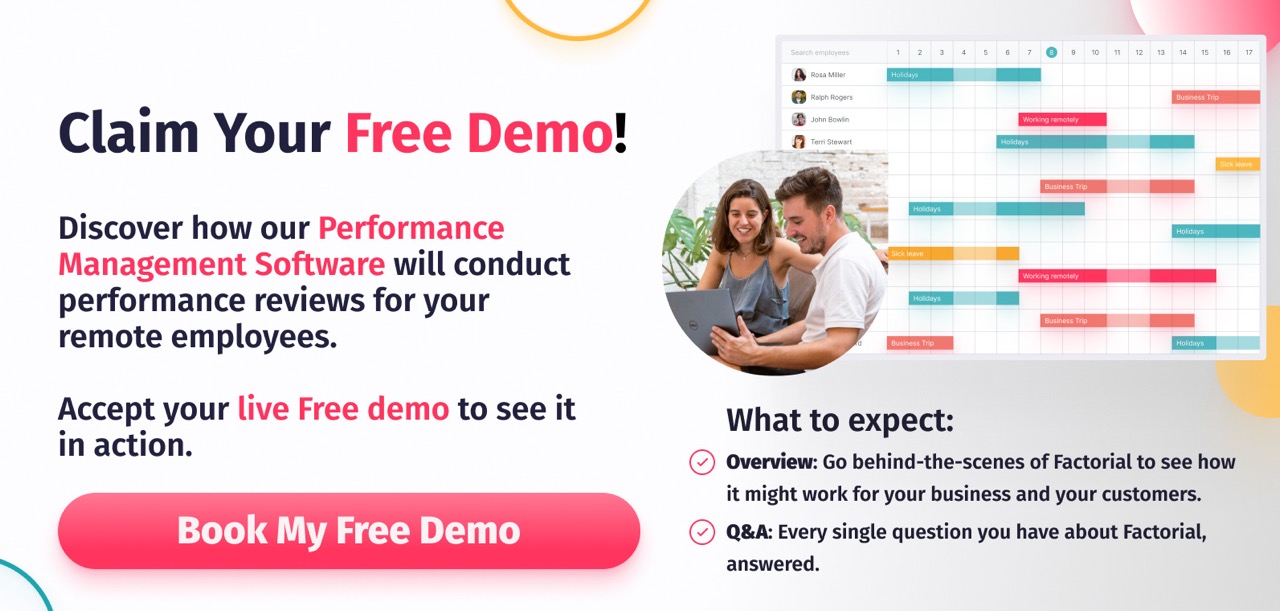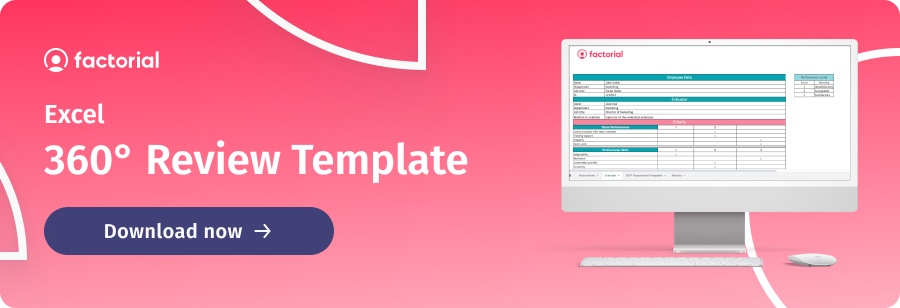With the explosion of remote and hybrid work environments during the pandemic, many companies had to adapt their policies and procedures to adapt to remote or hybrid work employees. This has created challenges relating to employee engagement, motivation, productivity, and communication. One of the most pressing questions HR managers are asking is “How do I conduct a performance review for remote employees?”
In this article, we’ll cover everything you need to know about conducting employee performance reviews for remote employees. We’ll discuss how they differ from a traditional performance review process and what you need to keep in mind when you conduct your remote appraisals. We will also share tips and best practices and discuss the benefits of using the right tools and software to help you get the most from your remote performance review process.
- What is a Performance Review for Remote Employees?
- The Importance of Remote Work Feedback
- Tips for Writing a Performance Review for Remote Employees
- How to Do Performance Reviews Remotely
- Tools for Effective Remote Performance Management
- ✅Check here our Performance Management Software
What is a Performance Review for Remote Employees?
An employee performance review is a periodic formal assessment of an employee’s work performance. Traditionally, employee reviews were conducted once a year and were heavily tied to salary reviews, raises, and dismissals. More recently, companies have started to question the effectiveness of traditional methods which are increasingly viewed as costly and one-sided. Instead, HR managers are favoring more frequent bi-directional meetings focused on creating a high-performance culture that values constructive 360 feedback, continuous development, and the nurturing of employee morale.
Performance reviews can be stressful for both managers and employees even at the best of times. The pandemic has added an extra layer of anxiety for both HR managers and employees. With a performance review for remote employees, you also need to take into account the fact that you don’t see your employees in person on a regular basis.
In fact, this is proving to be one of the key issues for people teams in the post-pandemic “new normal”. How do you assess employees you may not have seen in person for months? How do you monitor performance and output if your only communication with an employee is via email and Zoom?
This places higher importance on soft skills like self-awareness, discipline, work ethic, and adaptability. It also means that factors like communication and feedback are vital for maintaining a productive, high-performing work environment.
How to Manage Performance Evaluations in the Work-From-Home Era
A performance review for remote employees relies heavily on communication and remote work feedback. This transparency helps ensure that employees know what is expected of them, and managers can rest assured that their employees are performing as expected.
A constant dialogue with your employees is essential if you want to identify problems and understand what’s going on in the company. It helps foster healthy communication between you and your team, and it encourages professional growth and development. In fact, studies have shown that companies that frequently provide feedback to their employees have a lower turnover rate and their employees are more motivated.
Conducting a regular virtual performance assessment is a great way of collecting feedback from remote employees. Another great tool is using regular employee satisfaction surveys to measure engagement and morale. These give employees the opportunity to reply thoughtfully to questions about management, training, compensation, and recognition. Managers can then use these results to gain unparalleled insight into their operations and create a place where people want to work.
Tips for Writing a Performance Review for Remote Employees
Here are a few tips and best practices to keep in mind when you conduct your performance review for remote employees:
- Make sure your employees are clear on the why, who, when, and how of the performance review for remote employees process. Employees need to understand the purpose behind these reviews and how they will benefit them individually. They also need to understand that honest and transparent feedback is a vital component of continuous performance management.
- Ensure the goals you set for each employee are well-defined and aligned with the objectives of the company. Consider using a methodology like Objectives and Key Results (OKRs) as part of your performance improvement plans.
- Establish and communicate clearly defined processes that support ongoing, real-time feedback, and share engagement surveys to monitor how your employees are coping with the challenges of remote work.
- Adapt your performance review questions so that they also take into account the soft skills needed for remote work, not just individual output. These include communication, self-awareness, discipline, work ethic, autonomy, and adaptability.
- Adapt your performance review schedule. When it comes to remote workers, it’s best to conduct performance reviews as frequently as possible to keep employees engaged. This will help you develop a more people-focused approach. It will also make it easier for employees to share feedback and for managers to make adjustments to goals where necessary.
- Recognize and show appreciation for employees who are engaged and working hard. Consider implementing an employee recognition program to boost morale.
- Use tools as part of your online employee appraisal system to monitor performance and collect valuable data.
How to Do Performance Reviews Remotely: 5 Easy Steps
Follow these steps to conduct a virtual performance assessment that ensures fairness and accountability and promotes growth and development.
Create an Evaluation Form
Create an evaluation form for your remote employee appraisals and make sure all your managers use it as part of the online employee appraisal system. Limit the areas of focus to essential job performance areas and soft skills required for remote work. This will help ensure your reviews are conducted fairly, consistently, and objectively.
Identify performance measures
One of the most important aspects of performance assessment is goal setting. It helps your employees know what is expected of them, and it helps your managers monitor and quantify an employee’s performance against clearly defined metrics. Have your goals shifted since the pandemic? Has this impacted performance? Decide which KPIs are most important for your remote workers (such as productivity, engagement, and soft skills), then make sure you communicate them to all remote employees.

Set guidelines for feedback
The other vital component of an online employee appraisal system is 360-degree feedback. Without it, performance reviews are a waste of time. Make sure your managers know what sort of feedback they should be giving and focus on both strengths and weaknesses. Encourage employees to share their feedback in return. This will help you create an environment of bidirectional continuous improvement.
Create disciplinary and termination procedures
Aside from conducting a performance assessment, you also need to define how you will measure performance, and what you will do if an employee doesn’t meet expectations. How will you manage poor performance? Do you have clearly defined disciplinary and termination procedures? (For example, a verbal warning, a written warning if there is no improvement, and termination if the situation is not ultimately resolved). Make sure your managers and employees are clear on all procedures.
Set an evaluation schedule
Establish an evaluation schedule as part of your online employee appraisal system. How frequently will they be held? Will you only conduct formal appraisals, or should your managers conduct regular informal check-ins to monitor progress too (highly recommended). Once you establish a schedule, make sure your managers stick to it. If an employee feels their appraisal doesn’t matter, then they will feel undervalued and it could harm performance and morale. This is especially true for remote workers who are likely to feel a degree of disconnect working from home. Regular check-ins and appraisals will help them feel connected and remind them that they are part of a team, even if it’s a remote one.
Performance Management for Remote Workers
When it comes to remote performance management, having the right performance management tools and systems is vital. Good remote performance management software should help you keep your remote employees on track so that they perform to the best of their abilities, regardless of location. It should help your HR departments set individual and team goals that are in line with the aims and values of the company. It should also motivate your employees with the strategic development of their skills. Additional features usually include reporting, systems for collecting and analyzing feedback, employee surveys, and rewards for improved performance.
Due to the pandemic, employee performance reviews are more important than ever. Unfortunately, it is also more difficult than ever. Software can help optimize and streamline your performance review process so that it is more efficient and effective, even in difficult times.
With Factorial’s performance management software solution, you can:
- Gain insight into your workforce with 360-degree reviews
- Use schedule regular performance review cycles in order to make strategic decisions based on qualitative and quantitative data
- Tailor each employee evaluation to the performance needs of your company
- Choose from multiple-choice, short-answer, or rating questions, and select whether or not answer will be anonymous
- Track the progress of each employee performance review
- Automate your performance reviews processes
- Access feedback directly on Factorial’s platform
- Centralize all your HR processes


